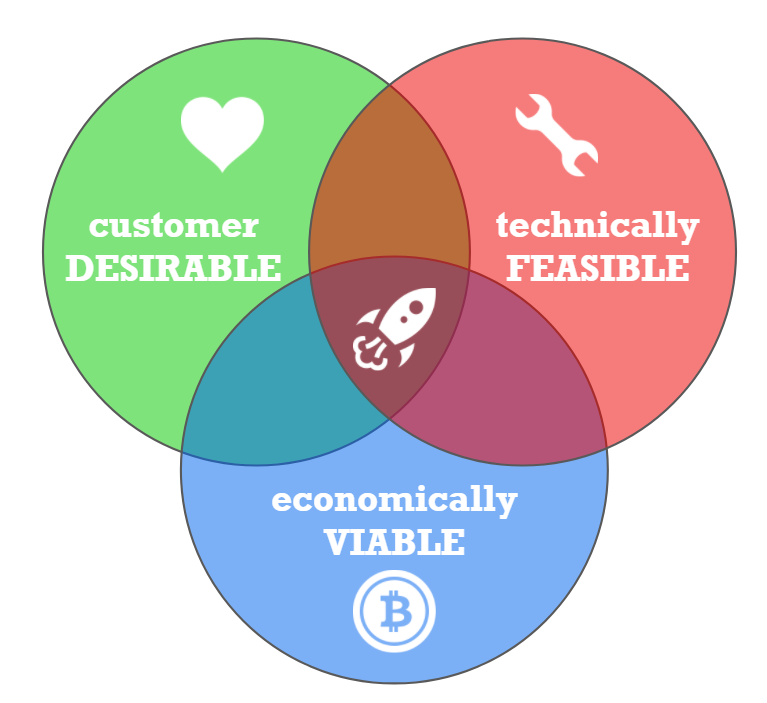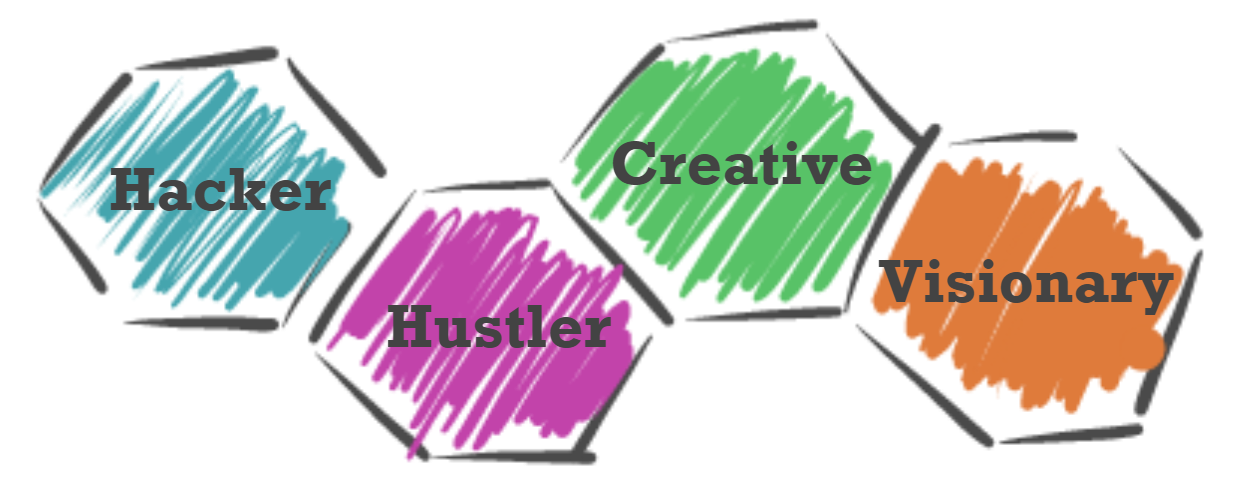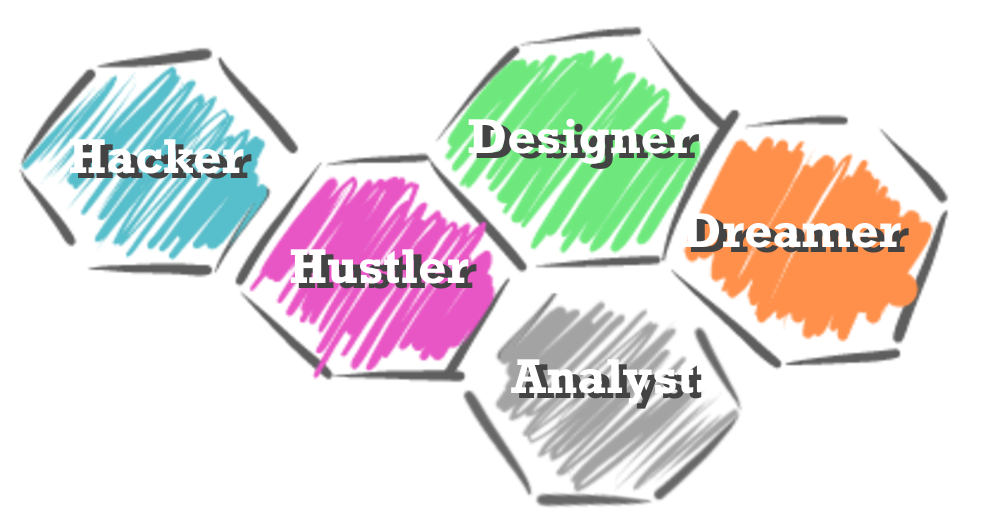The two laws of building products – The Startup – Medium
- If you can’t sell it, don’t build it
- If you can’t build it, don’t sell it
The single necessary and sufficient condition for a business, says MIT’s Bill Aulet, is a paying customer. But that’s not a sufficient requirement for a good business; instead, to use IDEO’s Tim Brown as a guide, we need to apply a ‘design thinking’ approach, finding the sweet spot of what is desirable to customers, technically feasible and commercially viable. Then we need to sell it, keep selling it and sell it some more.

Discovering this magical place takes either resilience and luck or discipline and rigour. Many successful businesses happened into their product/market fit through trial and error, which is one reason the failure rate for startups and small businesses is so high.
New ventures and products need to rapidly progress from high uncertainty to low as fast as possible (and with the smallest investment). To expedite the process of finding the solution that is desirable, feasible and viable, you need a team.
Three is the magic number. Four and five are also good.
There’s a vanishingly small chance of meeting a single person that can effectively challenge all three perspectives of your solution, and rare to find an entire startup team that can do it. When you do find these teams, it’s rocket fuel for business success.
In my experience, startup teams are often formed by chance rather than cooly appraised design. Co-founders already know one another socially or from previous jobs, or meet at events that they’re interested in. These chance meetings and shared interests tend to favour similar personalities and skill sets — product owners meet at product events, Ruby developers meet at Ruby meetups. Consequently we often find startup teams lacking the necessary diversity to work through the three perspectives of the product. Instead, it’s painful experience and burning cash that teaches them what they need to know about their missing disciplines.
The startup archetypes
Years ago, before I worked with startups, I ran a lot of hack days. Over the years we experimented with different ways to come up with ideas and form teams. We noticed the same self-reinforcing dilemma; techies would seek out other techies and build technical prototypes, marketeers would seek out other marketeers and build amazing product pitches. These ended up as amazing but lopsided entries into the hack day judging.
And so, to force diverse teams, we asked people to arrange themselves by archetype, and enforced teams with different skills.

Each person attending the hack day was given a description of the archetypes and asked to self select into a primary and a secondary category. Then, when teams were forming, we asked that they avoided having more than one of the same archetype.
The end result? Our most successful hack day ever, resulting in the creation of two new businesses that graduated into our internal incubator.
How do archetypes map to the three perspectives?
Anyone who has worked in a business for any length of time will have met sales executives that would happily sell non-existent features just to get a deal or developers who would keep coding for the pure intellectual challenge of solving their puzzle.
The reason for the creation of our archetypes was to create a balance, and a healthy tension of challenge and compromise in the team — we wanted developers to challenge sales people to consider the feasibility of what they were promising, for sales execs to encourage techies to trade perfection for speed to market.
The archetypes we originally used were drawn from impromptu research on successful founder teams. I drew from teams that I knew, and a long Quora post from other founders proposing their ideal teams.
It was trial, error and guesswork, but we’d hit upon an important realisation — cross-functional teams outperformed teams of close friends, even though they were created in the moment. The challenge of the project created teamwork, but the skills allowed success.
The importance of the skills brought to the table is that they create a tension between team members, that helps the team address each of the three perspectives. By pulling in different directions and representing different disciplines, the team is more able to come up with more realistic, and more lovable, solutions.
The new archetypes
Over the years since that first hack day, I’ve reviewed and revised the archetypes I recommend. In part, this is directly inspired by the need to address the three perspectives, but also recognises two another critical element of a new business. Not only does the product need to be desirable, feasible and viable, but we need to be able to run the numbers and sell the product or service in the long term.

The Dreamer
Great businesses are started by dreamers. The dreamer sets the future vision for the business and convinces founders and investors to come along on the journey. The Dreamer is often the chief customer evangelist and brings the original idea, inspiring staff and investors alike. Dreamers are positive and sometimes unrealistic; their challenge is that they are often not grounded or operational — they can leave reality bombs in their wake that other people may need to pick up.
Skills: public speaking, investor relations, big picture thinking, customer-centric, inspirational. The Dreamer keeps the team, customers and investors emotionally involved in the product and business.
The Hacker
If you can’t build it, don’t sell it. The Hacker’s job is to bring hard reality to the party. If the job of the Dreamer is to dream the impossible, the job of the Hacker is to make the impossible possible.
While the Dreamer may be pushing ever forwards, the Hacker’s job is to step on the Dreamer’s reality bombs and find real solutions to hard problems. If your product is software, the Hacker may be a coder. If it’s physical, they may be an engineer. If you’re providing a service, the Hacker is a process designer. Hackers are the hands of the business. However, Hackers can sometimes possess Eeyore-like qualities, seeing the pain in every new idea, and often over-designing solutions for the possible future.
Skills: Coder, architect, engineer, scientist, carpenter. The hard skills will differ, but the Hacker needs to know (or quickly learn) everything necessary to build the solution.
The Designer
The Designer is not just the artistic side of the business, although that falls somewhat into this role. The Designer brings a design thinking approach and a sensitivity to what makes products and processes fit for purpose and lovable. The designer is often part user experience designer, part illustrator, but all design thinking coach for the rest of the team.
Skills: design thinker, poster artist, illustrator, wireframer. The Designer excels as you build your first brochure and your first prototype.
The Hustler
Your business won’t work without a hustler. You may have introverts in other roles, but the Hustler is pure extrovert. Unafraid to pick up a phone and make cold calls, the Hustler opens doors. While it might seem unnecessary to have a sales executive without a product, the Hustler will help you decide how to take your product to market, and if it will even sell. At events and conferences, the Hustler is jostling for the stage with the Dreamer, but only one of them will be grabbing business cards.
Skills: pitching, lead generation, cold calling, sales processes and sales management. The Hustler turns your product into money, and will know the ins and outs of sales cycles.
The Analyst
Or, as I affectionately call them, “The Money”. The Analyst loves data. Give them a market to size and they’ll run the numbers. Sales projections, cash burn rates, unit economics. The Analyst will work on your customer acquisition costs, lifetime value and turn their hands at your finances. The Analyst is concerned about making sums add up, and keeping the ink black.
Skills: not necessarily an accountant or economist, the Analyst has solid head for numbers. Possibly coming from finance or a quant role, like business analysis or consultancy.
Why you can’t make decisions in a vacuum.
Teams need to do better than just delight their customers. They need to consider the operational cost after building a product. The business model needs to consider the cost of sales flying to international clients, or the pipeline of customer acquisition in search-driven B2C services, or the cost of running a 24 hour support helpline.
Most markets no longer tolerate cost-plus models. Now, the market sets the rate and you need to deliver the product and make a profit. Your costs are unlikely to simply be a bill of materials, labour and shipping.
All of these complexities drive creative conversations within your team. Instead of building to spec, with the Hacker building the product the Dreamer is demanding for the customer, the best solutions are compromises. The cross-functional team allows the founders to learn from each other and develop complementary skills.
The team is virtual
Despite appearances, I don’t believe that every product needs one person representing each archetype. Instead, you’re looking for a balance of skills that covers the three perspectives, and every product and business will have different needs.
Is your product desirable? Is it technically feasible? Is it commercially viable? Your team should be able to answer all of these questions, not just one or two. The size of the team is less critical than having the skills available.
It’s possible that you’ll have a Dreamer with a side of hustle. Maybe you have a computer science grad with an MBA, serving up equal rations of Hacker and Analyst. Maybe your Hustler has a hidden artistic side. The point is not to tick archetype boxes, but rather to ensure that you have the skills to analyse your business properly.
The beauty of startups and small teams is that people have poorly defined roles, and are therefore required to pitch in wherever necessary. The archetypes are simply your guide to making sure you can consider all the angles. And remember,
- If you can’t sell it, don’t build it
- If you can’t build it, don’t sell it

This story is published in The Startup, Medium’s largest entrepreneurship publication followed by 294,522+ people.
Subscribe to receive our top stories here.

